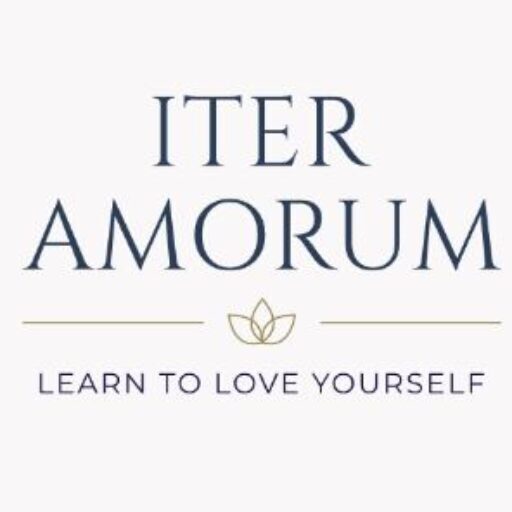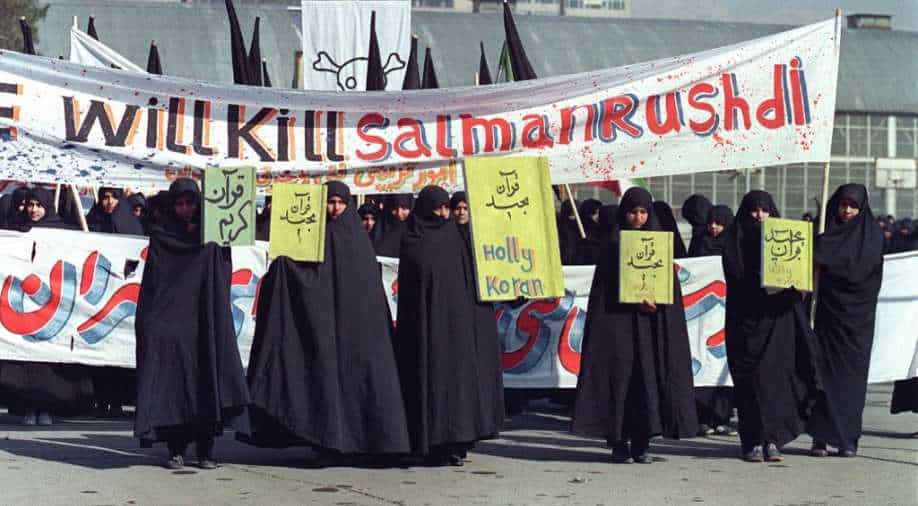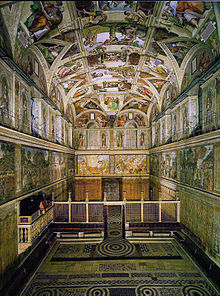Published on September 27, 2024
- Introduction and Objective
There always has been a strong connection between religion and culture, seen as two sides of the same problem: the need for a group of individuals to understand the world and to represent its value in their own system, because until some point in history – culture and religion can be considered one thing that tries to give an image to our world.
If we report ourselves to Nietzsche’s definition – “Culture is, above all, unity of artistic style in all the expressions of the life of a people”[3] – then we can understand broadly that there is a solid link between culture and religion, both being part of people’s lives, because even an atheist should deny some religious views or concepts to be a disbeliever.
Few periods of time in our development as humans have been marked by a so-call lack of religion, but, at a detailed analysis, as I said before, to deny a concept firstly requests to know that notion, to understand it, and, above all, to have another thing to replace it.
One will say that our time, the present, is a moment of disconnection between God and His people (and by God, I try to encapsulate all the divine entities that “reside” among us: IHWH – for the Hebrews, Allah – for the Muslims, Dumnezeu – for Romanians, Buddha – for Buddhists…etc.), an era that science governs everything and everyone, but is it really the truth?
As a matter of fact, the relationship between culture and religion cannot be analysed by isolating these concepts in a bubble that involves only the two of them, so, in fact, a broad perspective should be taken into consideration involving notions such as society, ideology, politics and history.
This paper aims to highlight two different perspectives on the relationship between religion and culture in a specific historic and social context that drove unprecedented situations.
To achieve this purpose, the essay will focus on analysing two opposite moments, one situated in Renaissance Italy (being an example of integration between culture and religion), and the other one more contemporary to us, in 1989, in Iran (an illustration of how religion is above culture, tending to annihilate it); these moments affected their time and our time as well due to their impact that is just like a domino game that hit the world forever, because, unfortunately, our planet does not have an “undo” button to reverse things, to give you a second chance or to fix a problem.
- Results
II.1. Relationship between culture and religion in the Italian Renaissance, with a focus on the work of Michelangelo Buonarroti
In his book “After God”, Mark C. Taylor reminds us that Mircea Eliade strongly pointed out the idea that the religion has not a sui generis apparition, but in fact, it is bounded to a complex context that implies certain aspects of society such as “social, economic, political, and psychological processes” (Taylor, 2009).
Mutatis mutandis, the Renaissance that spanned the entire of Europe brought out to light a new relationship between religion and culture as a result of the changes started by the statement of Protagoras “Of all things the measure is Man, of the things that are, that they are, and of the things that are not, that they are not” (Mary Louise Gill and Pellegrin, 2009) – statement that became a staple for this new cultural movement.
Therefore, Renaissance created an environment that led to a new approach to how the Church interfered in the culture’s development.
This was a moment in history when religion and the Church had to change and to be changed after the Dark Ages put a shadow on culture in every aspect of it. More than this, while during Middle Ages Church was above the state, in Renaissance the situation was completely different since the state started to separate from Church.
Liberated from religious tutelage, culture began to expand its interest to a more terrestrial subject – the man himself – that become a τόπος in paintings and sculptures, where the artists gave themselves the freedom to represent the human body as a reiteration of Antiquity.
Thus, staunchly oriented to represent life in its pure form, Renaissance artists continued to approach religious themes having as patrons the popes and other Maecenas who willingly put their money into the service of art but still asked for religious subjects.
While during Middle Ages visual arts showed a virtuous representation of religious themes, Renaissance have a more human approach and dared to depict sacred subjects in an ordinary light giving common figures to deities – all these in a context that emerged at once with the access of people to Bible in their spoken language (Taylor, 2009, p. 74).
Into this new cultural movement, that will change forever Europe’s face in every way, there is one artist that captured the attention of experts: Michelangelo Buonarroti – truly a man of his time (homo universalis) having preoccupations with different types of art: painting, sculpture, and literature, just to name a few.
Though all of Michelangelo’s works are masterpieces, the Sistine Chapel functions as an illustration of how religion integrated into the culture and vice-versa serving as a sort of individualism both for the patron who ordered and the painting and the painter himself (Beck, 1992, p. 127).
In this sense, it is stipulated that Pope Julius II, former Giuliano della Rovere, who took his papal name right from the Roman Dictator Caius Julius Caesar, was hardly accepted in the Chapel while Michelangelo painted it (Joost-Gaugier, 1996).
Interestingly it is to analyse this relationship between two men that encapsulated the concept of power in their fields of action: Pope Julius II was the head of the Catholic Church (see Taylor, 2009, p 49) and Michelangelo was the most appreciated artist of his time. In this light, the distance between culture and religion tended to be ironed leading to a more modern approach, the one of integration.
The depiction of Man creation – the image that stirred the scientific world (few presumptions stipulated that this fresco is an illustration of a placenta or a human brain) – is a more terre-à-terre interpretation of the human body, a beautiful reiteration of Antiquity, that in some way is far from the scrumptious Middle Age that saw the nudes as a shameful way of showing the sin (Clark, 1972, p. 311).
Besides this well-known image, there is another depiction, a huge sculpture, that illustrates the Biblical theme in which David kills Goliath with a sling and stone. The statue as it is seen today in La Galeria Dell’Accademia in Florence, Italy, presents a full male nude of more than five meters that inflamed Florentine spirits back in 1504 when it was exposed (Olszewski, 2016).
Many things can be said about the statue’s purpose – that illustrates Florentine fortitude, that has a connection with Machiavelli or, more simply, is a symbol of a city – but the fact that a Biblical hero was depicted nude (maybe this could be seen as a consequence of the fact that David rejected the armour that Saul gave to him – 1 Samuel 17:32-40) in the era of Savonarola it is a proof that religion needed to integrate into the culture and to become a part of life as it started then, at the beginning of a modern period called Italian Renaissance.
II.2 The relationship between culture and religion in Iran, 1989, and onwards with a focus on the novel The Satanic Verses by Salman Rushdie
Qur’an 53 Sürat al-Najm – for a non-muslin these few words mean nothing, they have no signification even a Christian will read the specific text from the “Muslim Bible”, will try to find an interpretation, and will study a whole scholarly literature about it, but for a Muslim, these are the words of Allah throughout his last messenger, prophet Muhammad.
But what can happen if these words are used as a source of inspiration for a literary work, a novel for example?
As we know, few Christian writers offended the Church with their works, some of them have been banned, others have been taken out from the scholarly books or, regarding the playwriters, their plays were no longer staged. Among these writers, there is James Joyce, the Irish novelist, and a Jesuit scholar, who, in his novel Ulysses, committed a sin against the Christian sacral eucharist, but he did not face any drastic consequence, let’s not talk about the death threat.
Using Qur’an 53 Sürat al-Najm as an inspiration source, the Indian-British-American novelist, Salman Rushdie, published in September 1988 a book named The Satanic Verses that inflamed the Islamic world and led to a radical consequence – a fatwa that called for the murder of the writer launched by a Muslim religious leader, the founder of the Islamic Republic, Ayatollah Ruhollah Khomeini. (Dagres, 2022)
On February 14, 1989, Iran’s state broadcaster stopped its daily programs to broadcast a fatwa or religious edict from the Islamic Republic’s founder, Ayatollah Ruhollah Khomeini. The fatwa address called for the murder of Salman Rushdie for writing a book he never read: The Satanic Verses.
The book, saying a surreal story (Wikipedia, 2022) using the modernist technique of magic realism, was well received by the critics winning some prises that proved its aesthetic value, being a concrete illustration of literary culture that emerged in a postmodernist context – in our society, and even before us, religion cannot be separated from society, ideology, economy, politics, and culture (Taylor, 2009, p. 222)
But, at the same time, this novel brings to light a problem that Muslims are not allowed to talk about: the prayers to the pagan deities (as we read in Qur’an 53 Sürat al-Najm 19-21) can be proof that Allah is not one and absolute, an idea that is against the Islamic religion.
The fatwa that called for the murder of Salman Rushdie was addressed in 1989, not even a year after his novel was published, and, at that time, was, at least in my country (Romania). not well known, and maybe it was the same case in other states.
Not dormant, the fatwa generated radical measures that were put into action by Islamists – Rushdie’s Japanese translator, Hitoshi Igarashi, was found stabbed to death in 1991 at just 44 years old.
The situation above described is an example of how religion is above culture in a cynical way that chastises the artist to the ultimate punishment – to pay for the art with his own life.
The fatwa launched by Ayatollah Ruhollah Khomeini did not remain in isolation in Iran but was made public using the Internet, a nowadays dangerous tool in the hand of extremists and orthodox Muslims.
Seen as an instrument of globalization, the Internet helped the fundamentalists spread their beliefs transforming the world into a small village where religion became the supreme force that oppressed people and the Islamic leader launched their fatwa (Weimann, 2011) so that the terrorist acts, rare back in time and without big signification, became events that shuck the Earth (Singer, 2016, p. 13).
Technology, more and more advanced, has given the Islamic religion the possibility of proliferation using websites that promoted an extreme type of faith that, sometimes, called for the ultimate sacrifice of the believer (Weimann, 2011).
With the help of the Internet, more and more fatwas were launched so Salman Rushdie’s situation was not isolated in that time nor rapidly forgotten. As a matter of fact, on 12 August 2022, the writer was stabbed while he was about to give a speech in New York, so his life was in danger, and he was hospitalized.
Thirty-three years later, the “arrow shot by Imam Khomeini hits home” in New York, or at least that’s how the clerical establishment in Iran sees the attempt on the life of the acclaimed British writer. Rushdie, seventy-five, was left severely injured after being stabbed multiple times on stage at an event in New York on August 12. (Dagres, 2022)
- Discussion / Summary
The two cases presented in this essay tried to put light on the idea that the historical context generates a relationship between religion and culture, and this relationship can fluctuate and change depending even on things that one considers lacking importance, such as social media channels and the Internet, in general.
Although a true power in Italy, Catholic Church understood, during the Renaissance period, that it cannot be the same as in the Middle Age and proceeded to a change aiming at integration with the culture that led to positive transformations throughout Europe, and Michelangelo’s works of art are living evidence of that flourishing time, when both, religion, and culture, were in harmony.
Opposing the above-presented situation, Salman Rushdie’s sad story illustrates how religion, being above culture, can annihilate human values, transforming the beauty of art into a price that the artist must pay. Little do we know about how things will evolve from this point of view, but one thing is sure the culture has been silenced even for a few seconds.
“I just learned that Salman Rushdie was attacked in New York. I am really shocked. I never thought it would happen. He has been living in the West, and he has been protected since 1989. If he is attacked, anyone who is critical of Islam can be attacked. I am worried.” – TASLIMA NASREEN
Bibliography
- Barolsky, P. (2004). MACHIAVELLI, MICHELANGELO, AND ‘DAVID’. Source: Notes in the History of Art, 23(3), pp.32–33. doi:10.1086/sou.23.3.23206849.
- Beck, U. (1992). Risk society: towards a new modernity. London: Sage Publications.
- Clark, K. (1972). The nude: a study in ideal form. Princeton, N.J.: Princeton University Press.
- Dagres, H. (2022). Tehran always wanted Salman Rushdie dead. Now it hopes to profit from his stabbing. [online] Atlantic Council. Available at: https://www.atlanticcouncil.org/blogs/iransource/tehran-always-wanted-salman-rushdie-dead-now-it-hopes-to-profit-from-his-stabbing/ [Accessed 28 Oct. 2022].
- Friedrich Nietzsche, Breazeale, D. and Hollingdale, R.J. (2014). Untimely meditations. Cambridge: Cambridge Univ. Press.
- Joost-Gaugier, C.L. (1996). Michelangelo’s Ignudi, and the Sistine Chapel as a Symbol of Law and Justice. Artibus et Historiae, [online] 17(34), pp.19–43. doi:10.2307/1483521.
- Mary Louise Gill and Pellegrin, P. (2009). A Companion to Ancient Philosophy. John Wiley & Sons.
- Olszewski, E.J. (2016). Michelangelo’s David: Full Frontal Nudity in the Age of Savonarola. Source: Notes in the History of Art, 35(1/2), pp.118–125. doi:10.1086/685634.
- Scourby, A. (2005). Macarthur study bible: new king James version. Thomas Nelson.
- Sinai, N. (2011). An Interpretation of Sūrat al-Najm (Q. 53). Journal of Qur’anic Studies, 13(2), pp.1–28. doi:10.3366/jqs.2011.0018.
- Singer, P. (2016). One world now: the ethics of globalization. New Haven: Yale University Press.
- Taylor, M.C. (2009). After God. Chicago: University Of Chicago Press.
- Weimann, G. (2011). Cyber-Fatwasand Terrorism. Studies in Conflict & Terrorism, 34(10), pp.765–781. doi:10.1080/1057610x.2011.604831.
- Wikipedia. (2022). The Satanic Verses. [online] Available at: https://en.wikipedia.org/wiki/The_Satanic_Verses#:~:text=The%20Satanic%20Verses%20is%20the [Accessed 28 Oct. 2022].
WION. (n.d.). Why was Salman Rushdie attacked and what is the controversy surrounding ‘The Satanic Verses’? [online] Available at: https://www.wionews.com/world/why-was-salman-rushdie-attacked-and-what-is-the-controversy-surrounding-the-satanic-verses-506382 [Accessed 24 Oct. 2022]. ↑
Wikipedia Contributors (2019). Sistine Chapel. [online] Wikipedia. Available at: https://en.wikipedia.org/wiki/Sistine_Chapel. ↑
Friedrich Nietzsche, Breazeale, D. and Hollingdale, R.J. (2014). Untimely meditations. Cambridge: Cambridge Univ. Press. ↑


